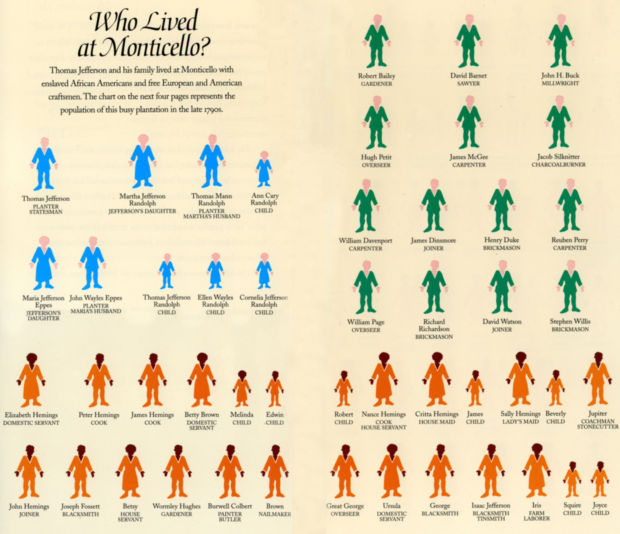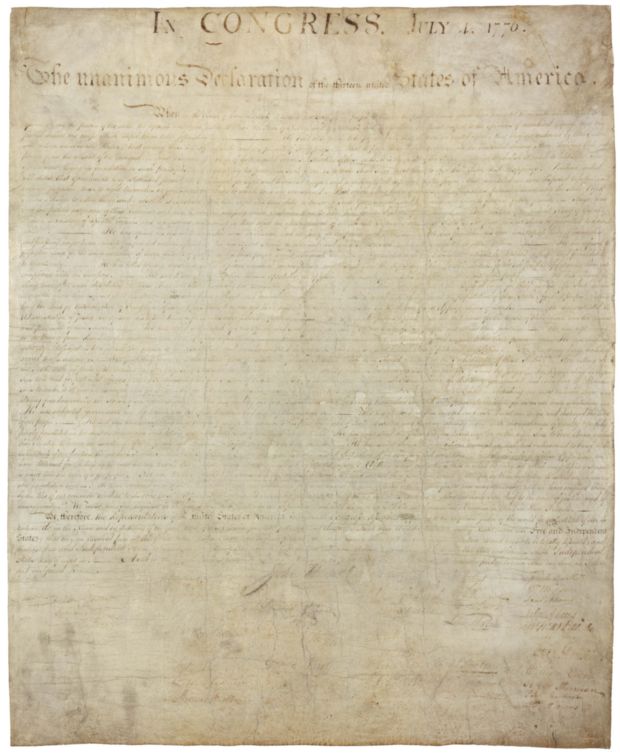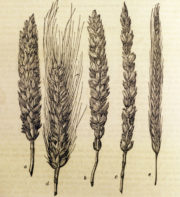Jefferson and Slavery
Reading Level: Middle School
Thomas Jefferson spent his entire life in the company of African-American slaves. Jupiter Evans, born in 1743 (the same year Jefferson was born) was his childhood companion. He later became Jefferson’s personal enslaved servant, traveling with Jefferson all over Virginia. Slaves accompanied Jefferson to Philadelphia, where he wrote the Declaration of Independence. They sailed with him to France, where he was a diplomat.
Over his lifetime, Thomas Jefferson owned over six hundred slaves. When Jefferson was twenty-one, he inherited about thirty slaves from his father. Later, he inherited 135 more from John Wayles, his wife’s father. By 1796, Jefferson owned about 170 slaves.
At Monticello, Jefferson and his family were surrounded by enslaved African-Americans. They were necessary for running the 5,000-acre plantation, which consisted of four separate farms. Enslaved workers plowed the fields, planted the wheat, drove the wagons, cared for the livestock and constructed the buildings. In the house they stoked the fires, prepared the food, washed the clothes, and cared for the children. The lives of Jefferson and his family were entwined with the lives of his enslaved workers. Another aspect of this interconnected web was the fact that four of Jefferson’s slaves were his children. Their mother was Sally Hemings, an enslaved woman at Monticello.
Edmund Bacon, Monticello’s overseer for sixteen years recalled that Jefferson “was always very kind and indulgent to his servants. He would hardly ever allow them to be overworked, and he would hardly ever allow one of them to be whipped.” But by law, Jefferson’s slaves were his property. And he treated them as property. When circumstances required it, he bought and sold them, gave them as wedding gifts, and hired or leased them out. Slaves who refused to obey were punished and some were sold “South.” And Jefferson granted only seven slaves their freedom.
Jefferson’s Views on Slavery
Jefferson owned slaves throughout his lifetime. He lived during a time when slavery was a well-established and accepted system in many countries. By the time he was twenty-one, people of African heritage had been enslaved in the colonies for about 145 years. But Jefferson felt that slavery had been forced upon his generation. He was against the slave trade, but thought his ability to make changes was limited. His prejudices against African-Americans also allowed him to rationalize a system of bondage, from which he directly benefited.
In 1774, he expressed his frustration with Great Britain’s King George III in A Summary View of the Rights of British America. “The abolition of domestic slavery is the great object of desire in those colonies, where it was unhappily introduced in their infant state.” He went on to state that the colonies’ attempts to stop the African slave trade had been “defeated by his Majesty’s negative.”
In 1776, Jefferson’s strong attack on the slave trade in the draft of the Declaration of Independence was deleted by the Continental Congress. In 1808, when Jefferson was president, he helped to steer through a law that ended America’s participation in the international slave trade. However, the buying and selling of enslaved people continued within the states.
Jefferson always believed that slavery was an unjust system. He called it an “abominable crime.” He favored a plan of gradual emancipation (freedom) that called for the freed slaves to be expatriated (removed outside the United States). He felt that slavery had created such fear and anger between whites and blacks that they could not live together in a stable society. Jefferson wrote that the races would have to be separated because of “deep rooted prejudices entertained by the whites; ten thousand recollections, by the blacks, of the injuries they have sustained.” Slaves made up over half the total population of Virginia. Jefferson felt that freeing them would not be a simple task.
Why then did the man who wrote “all men are created equal” and who believed slavery was a crime continue to own slaves? Historians have debated many reasons.
Labor
The plantation economy and southern way of life that Jefferson was born into depended upon slavery. Over half of the signers of the Declaration of Independence owned slaves. Like Jefferson, they needed enslaved laborers for their plantations. In Albemarle County, Jefferson owned a 5,000 acre plantation. He needed large numbers of workers to raise his livestock and his cash crops (tobacco and, later, wheat) and to support the plantation through work as carpenters, blacksmiths, textile workers, and wagoners.
Finances
For much of his life Thomas Jefferson was in debt. When he died in 1826 he owed more than $100,000 (about two million dollars in today’s money). Other than his land, Jefferson’s largest investment was in his slaves. When he died, Monticello’s slaves were sold and separated from their families instead of freed. Their sale made money, freeing Jefferson’s family from some of his debt.
Race
Like many people during the time, Jefferson believed in a racial hierarchy that put white people above black people. In his book Notes on the State of Virginia (published 1781-1782), he wrote about the physical and intellectual differences between whites, blacks and Native Americans. About Africans and people of African heritage, he said that “inferiority is not the effect merely of their condition in life.” It is a “suspicion only, that the blacks . . . are inferior to the whites in the endowments of both body and mind.” His prejudices against black people sometimes served as justification for enslaving them, and his ideas persisted despite his daily encounters with the intelligent and skilled enslaved people who surrounded him at Monticello.
The Question Still Remains
In his will, George Washington granted freedom to his slaves and their children. By 1804, all the northern states had set dates for ending slavery within their own borders. Thomas Jefferson, however, freed only seven slaves. He freed two in his lifetime and five in his will. Why didn’t he grant freedom to the rest, at least after his death?
When Jefferson died in 1826, he was $107,000 in debt. Six months later, crowds flocked to Monticello for an auction. There they bid on Jefferson’s property, which would be sold to help pay his debt. This included “household furniture”, crops, livestock, and “130 valuable negroes.”
Enslaved people such as Joseph Fossett, who was soon to be free, watched his wife and children sold to different bidders. Joseph’s son Peter Fossett was eleven years old at the time of the sale. Later, Peter recalled that he was “born and reared as free, not knowing I was a slave, then suddenly . . . put upon an auction block and sold to strangers.” Sadly, Thomas Jefferson, the man who wrote “all men are created equal” did not grant equality to the enslaved men and woman who called Monticello home.





